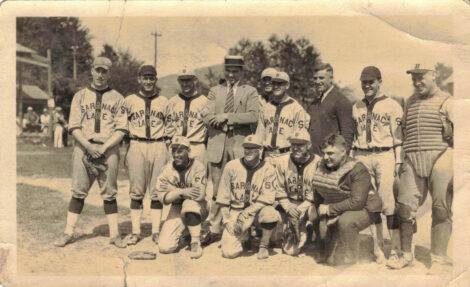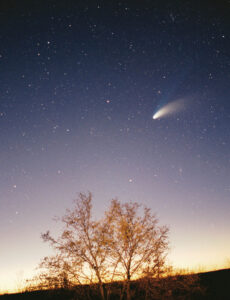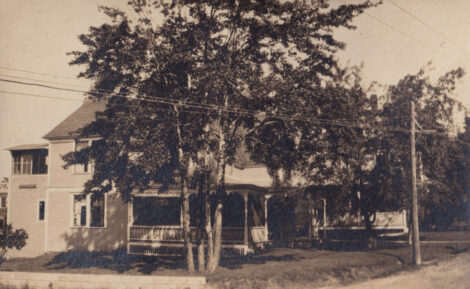Loony for loons

A loon sits near a nesting raft, constructed to help protect loon eggs from flooding and predators. (Provided photo — Diane Chase)
My mother-in-law loves loons. She is not alone. With its distinctive markings, yodel and bright red eyes, the Common Loon is one of the most recognizable animals in the Adirondacks. This year, the American Birding Association (ABA) has declared the Common Loon as its Bird of the Year. That is correct, people! Bring on the crown, sash and pageant show parents; this black and white beauty has won top honors.
Though the Common Loon is Minnesota’s state bird, loons are also an Adirondack icon. From their haunting call to their flapping-winged water dance, loons provide on-water entertainment when we are lucky enough to catch a glimpse of them.
The place to get all the necessary loon information is Saranac Lake’s Adirondack Center for Loon Conservation. Located at 75 Main Street, the ACLC open floor plan and mini-museum setting provide up-to-date information with interactive displays. There are even taxidermy mounts, games, a shop and a children’s corner. I learned that a loon’s eyes are only red during the mating season. Will I share that with my mother-in-law? Absolutely. I can’t wait to take her to the ACLC and let her wander around loon nirvana.
My family and I recently saw a loon we thought was caught in a cage on shore. We stayed over the recommended 150 feet away, but took photos and called ACLC to see if the loon was in any trouble. We emailed pictures and promptly received a response. The “cage” was a loon nesting raft, one of several that are deployed at various locations to provide loons with a safe area for their eggs, protecting them from predators, torrential rain and flooding. Loons will abandon their nests if they are under stress, so please maintain the recommended distance, do not pursue or approach the birds and always give them space.
If you wish to help count loons, the annual New York Loon Census takes place on the third Saturday in July for one hour. Held annually since 2001, this year’s event takes place on July 19. As a top aquatic predator, the loon is also an indicator of a healthy ecosystem. The Loon Census helps track environmental toxins, disease, climate change and habitat loss by monitoring the birds. Sign up at adkloon.org or call 518-354-8636 for additional information. There are links on the main ACLC webpage taking you to a map with green and red dots. The red dots indicate areas already with a monitor, while the green dots show areas in need of an observer.
The organization relies on volunteer citizen scientists to assist with fieldwork. Individuals are encouraged to sign up to monitor a specific lake by canoe or on foot to count the loons and chicks between 8 and 9 am. This event, like other Citizen Scientist projects, presents essential data to scientists while allowing participants to learn more about loons.
If you are a loon fan, but can’t get near the water, there are loon fan pages. Bird watchers, observers and scientists frequently post photos of this majestic bird. Local artists often sell renderings in various media. (There are a variety of options at the ACLC store.) I know we can always give my mother-in-law something loon related. As she is always sad to leave, being able to see her loon collection reminds her of the peacefulness of the Adirondacks. Enjoy!



